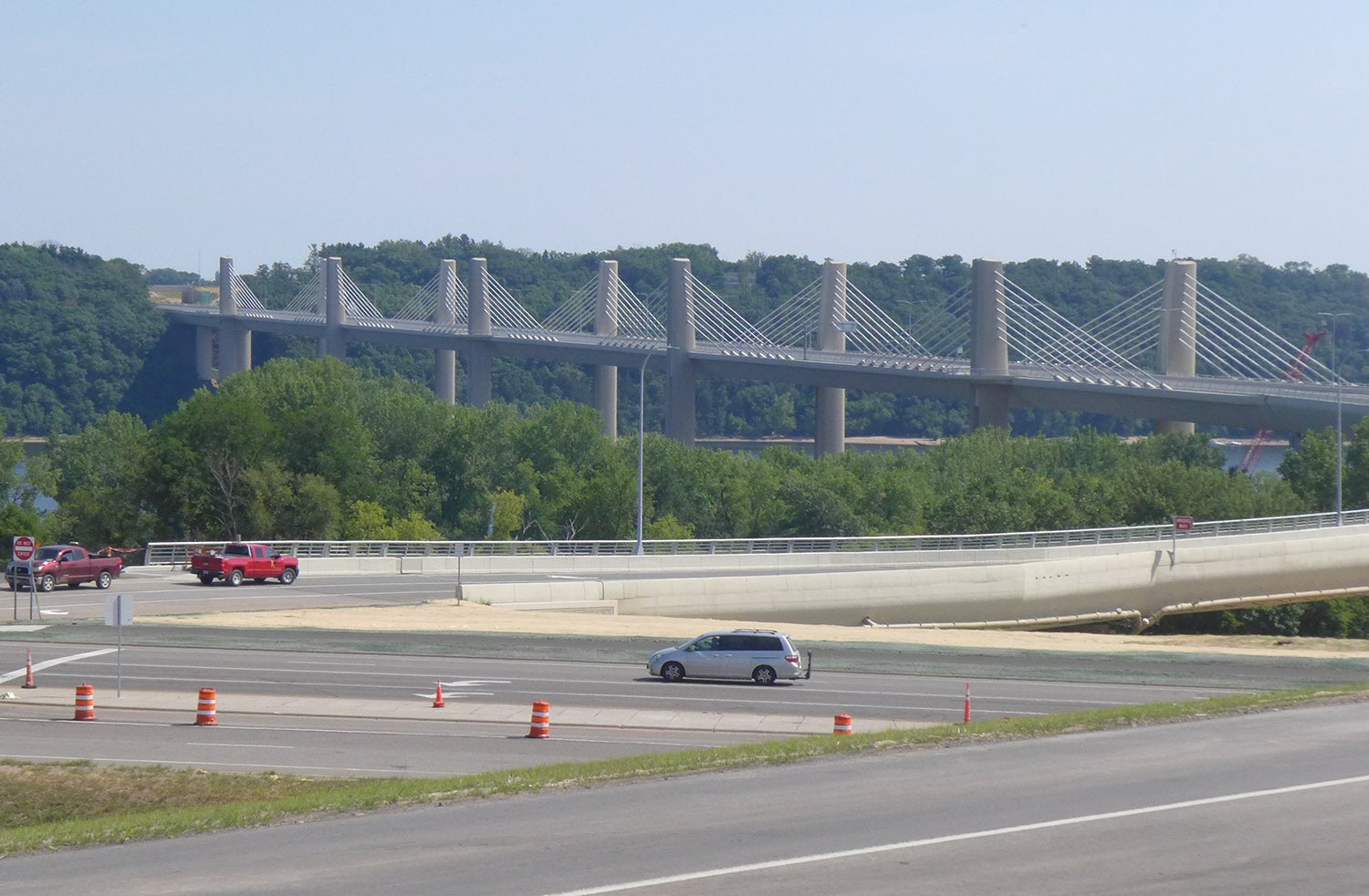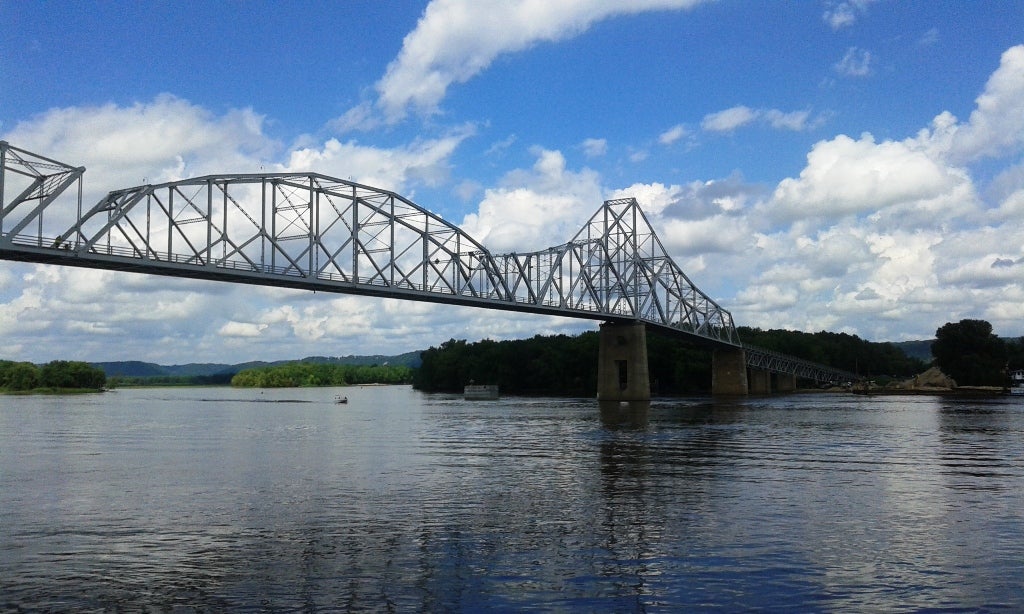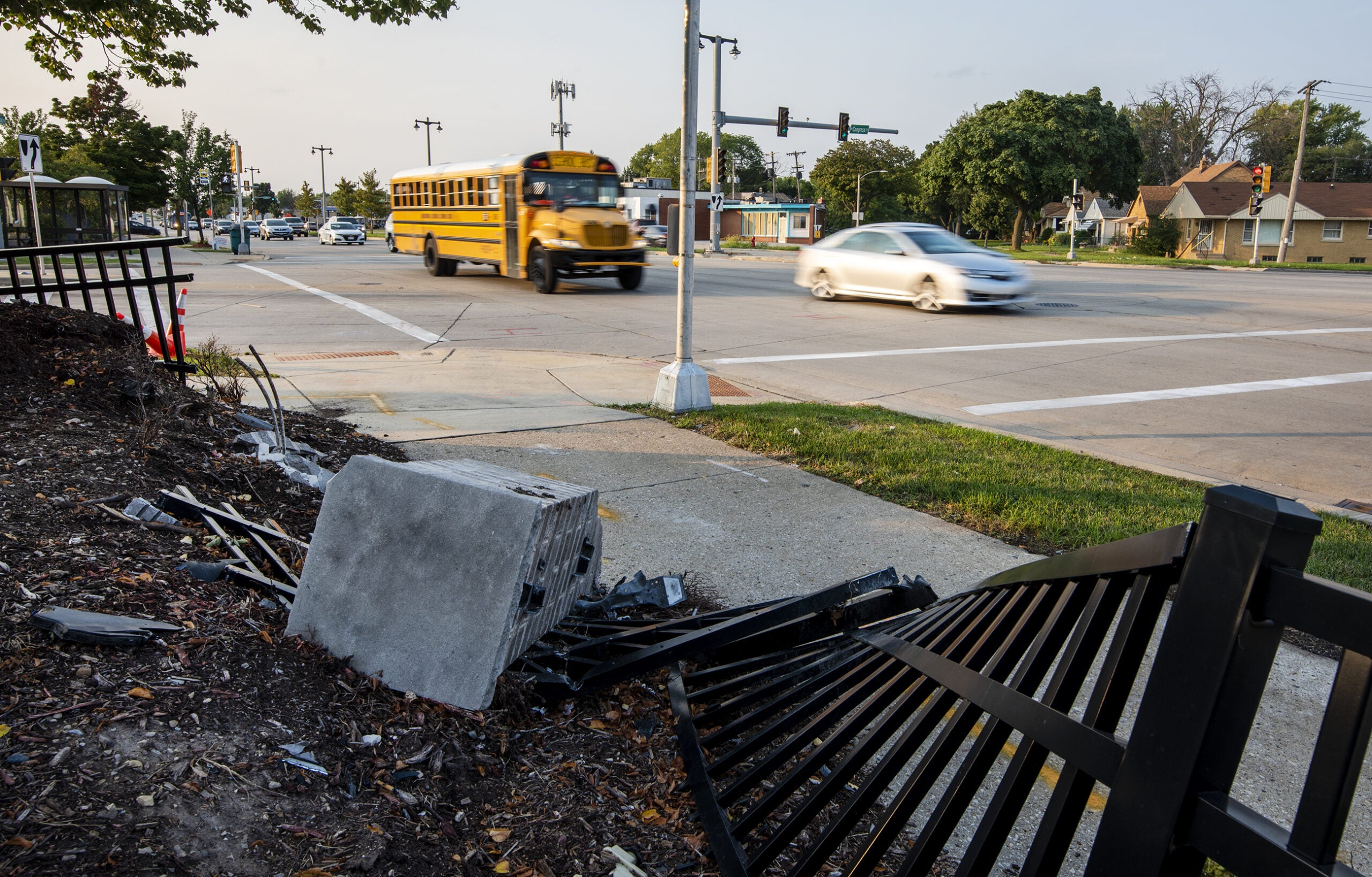A nearly $650 million bridge linking the Town of St. Joseph, Wisconsin with Oak Park Heights, Minnesota opened to the public this week. The completion of the mile-long St. Croix Crossing caps a decades long battle between the St. Croix River’s environmental legacy and the need for better infrastructure in one of the fastest growing parts of the state.
On a stage in the middle of the St. Croix Crossing’s eastbound lanes, a group of strange political bedfellows cut a red ribbon celebrating the bridge’s completion. Gov. Scott Walker and U.S. Rep. Sean Duffy, both Republicans, were seated next to Democrats, U.S. Rep. Ron Kind and Minnesota Gov. Mark Dayton. Walker called it a striking example of the bipartisan support for a link connecting St. Croix County with a straight line shot into the Twin Cities.
Officials, including Wisconsin Gov. Scott Walker and U.S. Reps. Sean Duffy and Ron Kind, take part in the ribbon-cutting Wednesday, Aug. 2, 2017. Rich Kremer/WPR
Stay informed on the latest news
Sign up for WPR’s email newsletter.
“This is cooperation between federal government, state government, local government, between the private sector and the public sector, between Minnesota and Wisconsin,” said Walker.
The crossing has five concrete piers with cables holding a roadway 110 feet above the St. Croix River. It replaces an iron, two-lane, lift bridge built in 1931, which is often in disrepair. Some local commuters have said the Depression-era structure was in such bad shape they would unbuckle their seatbelts and roll down windows to swim out in case of collapse.
It took supporters more than 20 years to get the St. Croix Crossing. Many at the ceremony gave credit to a New Richmond banker named John Soderberg for lobbying endlessly for it.
“I started over in Wisconsin going up and down saying that we need to do something about this bridge,” Soderberg said. “And at that time, Minnesota had not said anything. Then, after a meeting in 1992, they said, ‘Can we join you?’ and I said, ‘Yes, the more the merrier, and there’s going to be a lot of work with it.’”
That proved to be an understatement.
The St. Croix is federally protected under the Wild and Scenic Rivers Act, and when plans for a replacement bridge came out in 1995, Minnesota’s North Star Chapter of the Sierra Club sued to block it.
A mediator was brought in and a group of 28 stakeholders began hashing out differences. But Minnesota Sierra Club Director Margaret Levin said their smaller, more environmentally friendly bridge design proposals were dismissed.
“We felt that those options were never really taken seriously, and so we saw through the process, the continued proposal for a large highway expansion, which is how we view the St. Croix Crossing,” Levin said.
The group sued again in 2007, putting the St. Croix Crossing on ice once more.
Frustrated, supporters went for a long shot. If they could get a congressional exemption, bridge construction could begin. After intense lobbying, a St. Croix Crossing exemption won unanimous approval in the U.S. Senate and in February 2012, Duffy made the case to the U.S. House.
“There is no appropriations aspect, there is no budgetary authority. All we’re doing is deeming this bridge consistent with the Wild and Scenic Rivers Act,” Duffy said then.
The House voted overwhelmingly for the project and President Barack Obama gave his signature days later. By comparison, the five years of construction seemed like a flash in the pan.
From the riverbanks, residents eagerly awaited its opening, as support towers and pre-cast concrete bridge segments floated up the St. Croix River to the building site.
At the same time construction in nearby Wisconsin cities was ramping up too. Eric Allen of Allen Construction in New Richmond said the anticipation of a new bridge and an improving economy have driven home building in the city.
“Compared to a couple years ago, it’s probably 10 times the amount of new construction,” Allen said.
Traffic moves across the St. Croix Crossing on its first night open to the public on Wednesday, Aug. 2, 2017. Rich Kremer/WPR
Eight hours after the St. Croix Crossing was dedicated, it opened to traffic. An air of excitement hung overhead as thousands of cars crept across the well-lit deck in bumper-to-bumper traffic.
When asked what he’ll do with his time now, after 20 years pushing for the bridge John Soderberg paused. “I don’t know,” he said. “If I said I wanted a glass of brandy, that would be alright, wouldn’t it?”
The day after the four-lane St. Croix Crossing opened, the Minnesota Department of Transportation closed the 85-year-old Stillwater Lift Bridge to vehicular traffic. It will continue operating as a bicycle and pedestrian footbridge.
The St. Croix Crossing’s $646 million price tag is being split by Minnesota and Wisconsin. The Wisconsin share is $305 million. It’s estimated that around 30,000 cars will cross the bridge each day.
Wisconsin Public Radio, © Copyright 2024, Board of Regents of the University of Wisconsin System and Wisconsin Educational Communications Board.





